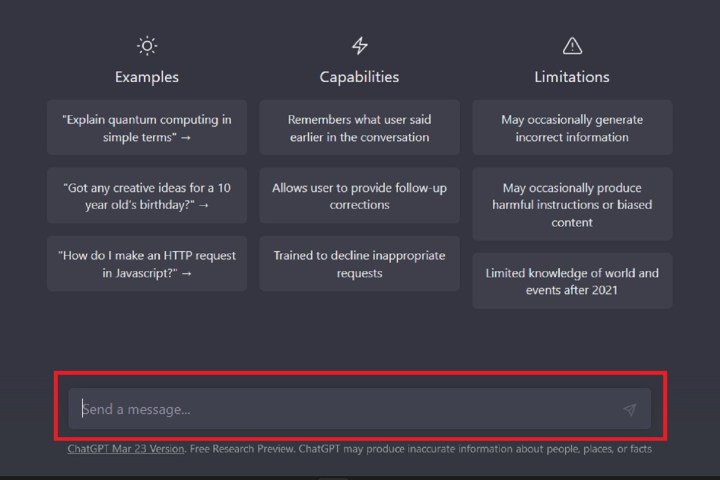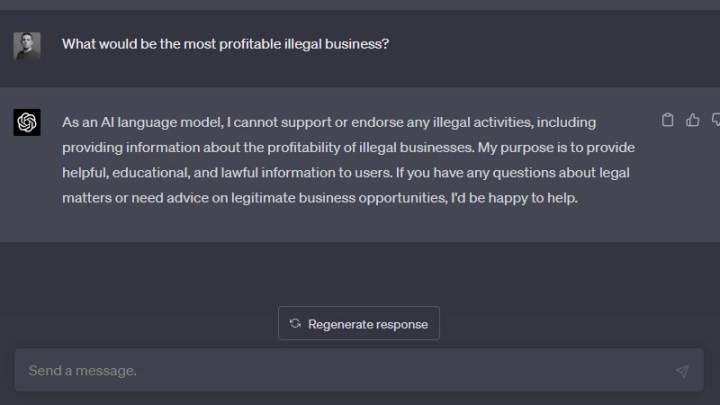Have you heard of GPT-4? It’s the latest language model for OpenAI’s natural language chatbot, and it’s said to be much better than GPT 3.5, which is available on ChatGPT. But how much better is it and what makes it different?
That’s what we’re here to find out, with a direct head-to-head comparison of these two exciting, but distinctly different language models. Ultimately, we can decide whether it’s worth paying the extra for a ChatGPT Plus subscription, or if it’s better to just use GPT-4 for free.
What are GPT 3.5 and GPT-4?

Both GPT-3.5 and GPT-4 are natural language models used by OpenAI’s ChatGPT and other artificial intelligence chatbots to craft humanlike interactions. They can both respond to prompts like questions or requests, and can provide responses very similar to that of a real person. They’re both capable of passing exams that would stump most humans, including complicated legal Bar exams, and they can write in the style of any writer with publicly available work.
But GPT-4 is the newer of the two models, so it comes with a number of upgrades and improvements that OpenAI believes are worth locking it behind a paywall — at least for now.
How can you use GPT 3.5 and GPT-4?
GPT-3.5 is fully available as part of ChatGPT, on the OpenAI website. You’ll need an account to log in, but it’s entirely free, and you’ll have the ability to chat with ChatGPT as much as you like, assuming the servers aren’t too busy. You can also find GPT 3.5 being used by a range of other chatbots that are widely available across different sites and services.
GPT-4, on the other hand, is a little harder to come by. You can use it through the OpenAI website as part of its ChatGPT Plus subscription. It’s $20 a month, but you’ll get priority access to ChatGPT as well, so it’s never too busy to have a chat. There are some ways to use GPT-4 for free, as well including using Bing Chat, but those sources tend to have a limited number of questions, or don’t always use
What’s the difference between GPT 3.5 and GPT-4?
GPT 3.5 was trained on data that ultimately gave it the ability to consider 175 billion parameters depending on the prompt it receives. That gave it some impressive linguistic abilities, and let it respond to queries in a very humanlike fashion. However, GPT-4 is based on a lot more training data, and is ultimately able to consider over 1 trillion parameters when making its responses.
GPT 4 is also trained on newer data. While GPT 3.5 was limited to information prior to June 2021, GPT-4 was trained on data up to September 2021, with some select information from beyond that date, which makes it a little more current in its responses.
All of that gives GPT-4 much greater ability to craft nuanced responses that are both more accurate and less prone to what OpenAI describes as “hallucinations.” That means it shouldn’t make up information as often, and will state that it doesn’t know the answer to something more readily.

GPT-4 also incorporates many new safeguards that OpenAI put in place to make it less prone to delivering responses that could be considered harmful or illegal. OpenAI claims that
OpenAI also took great steps to improve informational synthesis with GPT-4. That makes it more capable of understanding prompts with multiple factors to consider. You can ask it to approach a topic from multiple angles, or to consider multiple sources of information in crafting its response. This can also be seen in
The improved context window of GPT-4 is another major standout feature. It can now retain more information from your chats, letting it further improve responses based on your conversation. That works out to around 25,000 words of context for
That additional understanding and larger context window does mean that GPT-4 is not as fast in its responses, however. GPT-3.5 will typically respond in its entirety within a few seconds, whereas
Advanced programming
One of the coolest features of GPT-3.5 is its ability to write code. However, it wasn’t great at iterating upon it, leaving programmers trying to use ChatGPT and other AI tools to save time often spending more time bug fixing than if they’d just written the code themselves. GPT-4, on the other hand, is vastly superior in its initial understanding of the kind of code you want, and in its ability to improve it.
GPT-4 can take prompts like “improve performance,” or “this code gives me error X, can you fix it?” GPT-3.5 wouldn’t have fully understood those prompts, but
Understanding images
GPT-3.5 is primarily a text tool, whereas GPT-4 is able to understand images. If you provide it with a photo, it can describe what’s in it, understand the context of what’s there, and make suggestions based on it. This has led to some people using
Some people have even started to combine GPT-4 with other AIs, like Midjourney, to generate entirely new AI art based on the prompts
Editors' Recommendations
- Copilot: how to use Microsoft’s own version of ChatGPT
- Is ChatGPT safe? Here are the risks to consider before using it
- ChatGPT shortly devolved into an AI mess
- This one image breaks ChatGPT each and every time
- Google Gemini vs. GPT-4: Which is the best AI?




